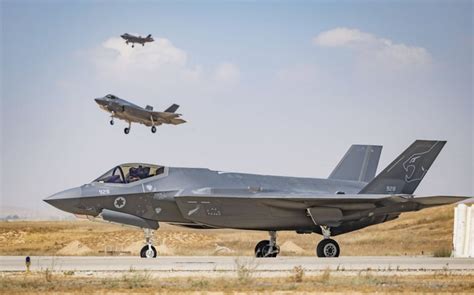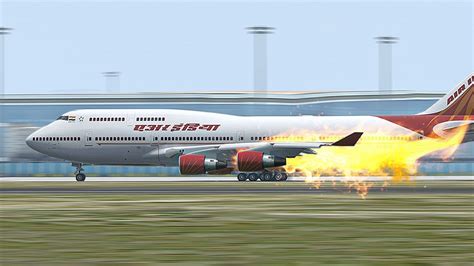
Air India passengers aboard a recent flight from Newark to Delhi endured a harrowing experience after discovering that critical onboard systems were non-functional, sparking outrage and raising serious safety concerns. A viral video captured the passengers’ frustration as they realized the entertainment system, lighting, and ventilation were inoperable, turning what should have been a routine international flight into a stifling and uncomfortable ordeal.
Passengers on the Air India flight AI106, which departed from Newark Liberty International Airport, New Jersey, on June 15, 2024, discovered shortly after takeoff that multiple systems were not working. “Video Shows ‘Nothing Working’ on Air India Flight, Passengers Say,” read the headline. According to passengers, the entertainment system was completely down, preventing them from accessing movies, music, or flight information. More alarmingly, the overhead lights failed to function, leaving the cabin in near darkness for extended periods.
“Nothing is working,” a passenger can be heard saying in the video, which was widely circulated on social media platforms. The clip showcased the dimly lit cabin and the evident discomfort of the travelers. Adding to the discomfort, the ventilation system malfunctioned, leading to a stuffy atmosphere inside the aircraft. Passengers reported feeling increasingly hot and uncomfortable, exacerbating the already tense situation. The conditions were particularly challenging for elderly passengers and those with pre-existing health conditions.
The incident has drawn criticism from travelers and aviation experts alike, raising questions about Air India’s maintenance protocols and pre-flight checks. Passengers voiced concerns about safety standards, questioning how such a critical failure could occur on an international flight. The airline has since issued a statement acknowledging the incident and promising a thorough investigation into the causes of the system failures. Air India also apologized for the inconvenience caused to the passengers.
The failure of multiple systems on Air India flight AI106 highlights the critical importance of regular and thorough maintenance checks on commercial aircraft. Airlines are responsible for ensuring that all onboard systems, including entertainment, lighting, and ventilation, are fully operational before each flight. When these systems fail, the comfort and safety of passengers can be severely compromised.
According to aviation safety regulations, airlines must adhere to strict maintenance schedules and protocols. These protocols include regular inspections of all aircraft systems, timely repairs of any identified issues, and thorough pre-flight checks to ensure that everything is functioning correctly. Failure to comply with these regulations can result in significant penalties, including fines, grounding of aircraft, and even revocation of operating licenses.
Passengers affected by the Air India flight AI106 incident have demanded compensation for the discomfort and inconvenience they experienced. Some are considering legal action against the airline, alleging negligence and breach of contract. Legal experts suggest that passengers may have grounds for compensation under international aviation laws, which protect passengers’ rights in cases of flight disruptions and service failures.
The incident has also prompted calls for greater transparency and accountability in the aviation industry. Consumer advocacy groups are urging regulatory authorities to conduct a comprehensive review of Air India’s maintenance practices and safety standards. They are also calling for stricter enforcement of aviation regulations to prevent similar incidents from occurring in the future.
The Air India flight AI106 incident is not an isolated case of system failures on commercial flights. In recent years, there have been several reports of similar incidents involving other airlines. These incidents underscore the need for continuous improvement in aviation safety and maintenance practices. Airlines must invest in advanced technologies and training programs to ensure that their aircraft are safe and reliable.
Air India’s response to the incident will be closely scrutinized by passengers, aviation experts, and regulatory authorities. The airline must demonstrate a commitment to addressing the underlying issues that led to the system failures and taking concrete steps to prevent similar incidents from happening again. This includes conducting a thorough investigation, implementing enhanced maintenance protocols, and providing adequate compensation to affected passengers.
The long-term impact of the Air India flight AI106 incident on the airline’s reputation remains to be seen. The incident has already damaged the airline’s image, and it will take significant effort to restore public trust. Air India must prioritize safety and customer service to regain the confidence of travelers and maintain its position in the competitive aviation market.
The incident on Air India flight AI106 serves as a reminder of the importance of aviation safety and the need for continuous vigilance in the airline industry. Passengers rely on airlines to provide safe and comfortable travel experiences, and airlines must uphold their responsibility to meet these expectations. By investing in safety, maintenance, and customer service, airlines can ensure that their passengers have a positive and enjoyable travel experience.
The video footage from the Air India flight has sparked outrage among passengers and aviation experts, who are questioning how such critical failures could occur. The incident highlights the importance of rigorous pre-flight checks and maintenance protocols to ensure the safety and comfort of passengers. The airline has issued a statement acknowledging the incident and promising a thorough investigation.
The discomfort experienced by passengers was compounded by the lack of ventilation, making the cabin feel stifling. Passengers described feeling hot and uncomfortable, which was particularly challenging for elderly travelers and those with health conditions. This incident raises serious concerns about Air India’s commitment to passenger safety and comfort. The airline’s response to this incident will be closely watched by travelers and industry experts alike.
The malfunction of onboard systems on Air India flight AI106 is a serious safety concern that demands immediate attention. The airline must take swift action to investigate the cause of the system failures and implement corrective measures to prevent similar incidents from occurring in the future. Passengers have the right to expect a safe and comfortable travel experience, and airlines have a responsibility to meet those expectations.
The Air India flight AI106 incident underscores the importance of regular maintenance checks and pre-flight inspections. Airlines must invest in the necessary resources to ensure that their aircraft are in safe operating condition and that all onboard systems are functioning properly. Failure to do so can have serious consequences, including passenger discomfort, safety risks, and reputational damage.
The response to the Air India flight AI106 incident has been widespread, with passengers and industry experts expressing their concerns and calling for action. The airline must address these concerns and take steps to restore public trust in its safety standards. This includes conducting a thorough investigation, implementing enhanced maintenance protocols, and providing adequate compensation to affected passengers.
The incident on Air India flight AI106 is a reminder of the potential risks associated with air travel. Passengers rely on airlines to provide a safe and comfortable travel experience, and airlines must uphold their responsibility to meet those expectations. By investing in safety, maintenance, and customer service, airlines can ensure that their passengers have a positive and enjoyable travel experience.
In-depth Analysis
The Air India flight AI106 incident from Newark to Delhi serves as a stark reminder of the multifaceted challenges faced by airlines in maintaining operational excellence and ensuring passenger satisfaction. Beyond the immediate discomfort and inconvenience experienced by passengers, the incident has broader implications for Air India’s brand reputation, regulatory compliance, and long-term viability in a highly competitive aviation market.
Maintenance Protocols and Safety Standards: The failure of multiple onboard systems—entertainment, lighting, and ventilation—on a long-haul international flight raises critical questions about Air India’s maintenance protocols and pre-flight inspection procedures. Aviation regulations mandate stringent maintenance schedules and thorough checks to identify and rectify any potential issues before an aircraft is cleared for takeoff. The fact that these systems failed simultaneously suggests a systemic problem, possibly indicative of inadequate maintenance practices or a lack of rigorous oversight.
Airlines operate in a highly regulated environment, with oversight from national aviation authorities such as the Directorate General of Civil Aviation (DGCA) in India and international bodies like the International Civil Aviation Organization (ICAO). These organizations set standards for aircraft maintenance, safety inspections, and operational procedures. Airlines must adhere to these standards to maintain their operating licenses and ensure the safety of their passengers.
The incident on Air India flight AI106 may trigger a thorough investigation by the DGCA to determine whether the airline complied with all applicable regulations. If violations are found, Air India could face penalties, including fines, suspension of operations, or even revocation of its operating license. The investigation may also examine the airline’s maintenance records, training programs, and quality control procedures to identify any deficiencies.
Passenger Rights and Compensation: Passengers affected by the Air India flight AI106 incident have legal rights under international aviation laws, such as the Montreal Convention, which governs liability for international air carriage. These rights include the right to compensation for damages or losses incurred as a result of flight disruptions or service failures.
Under the Montreal Convention, passengers may be entitled to compensation for various types of damages, including:
- Direct Damages: This includes expenses directly related to the flight disruption, such as the cost of alternative transportation, accommodation, meals, and other necessary expenses.
- Consequential Damages: This includes losses or damages that are a foreseeable consequence of the flight disruption, such as lost income, missed business opportunities, or other financial losses.
- Non-Pecuniary Damages: This includes compensation for pain, suffering, inconvenience, and emotional distress caused by the flight disruption.
The amount of compensation that passengers are entitled to depends on the specific circumstances of the case and the applicable legal provisions. However, airlines are generally liable for damages up to a certain limit, unless they can prove that the flight disruption was caused by circumstances beyond their control (such as natural disasters or acts of terrorism) or that they took all reasonable measures to avoid the disruption.
Passengers who believe they are entitled to compensation from Air India should file a formal claim with the airline, providing detailed documentation of their losses and expenses. If the airline denies the claim or fails to provide adequate compensation, passengers may have the option of pursuing legal action in court or through arbitration.
Reputational Damage and Brand Impact: The Air India flight AI106 incident has undoubtedly damaged the airline’s reputation and brand image. In today’s interconnected world, news and social media can amplify negative experiences and spread them rapidly, reaching a global audience. The viral video of the dimly lit cabin and frustrated passengers has tarnished Air India’s image and raised questions about its commitment to customer service and safety.
Brand reputation is a critical asset for any airline, as it influences passengers’ purchasing decisions and their willingness to fly with the airline again. A negative brand reputation can lead to a decline in bookings, loss of market share, and ultimately, financial losses. Air India must take proactive steps to mitigate the damage to its reputation and rebuild trust with its customers.
These steps may include:
- Issuing a Public Apology: A sincere and heartfelt apology to the affected passengers and the general public can help to demonstrate Air India’s remorse and commitment to making things right.
- Conducting a Thorough Investigation: A transparent and independent investigation into the cause of the system failures can help to identify the root causes and prevent similar incidents from happening again.
- Implementing Corrective Actions: Taking concrete steps to address the underlying issues, such as enhancing maintenance protocols, investing in new equipment, and improving customer service training, can help to restore confidence in Air India’s safety and reliability.
- Providing Compensation to Passengers: Offering fair and reasonable compensation to the affected passengers can help to mitigate their losses and demonstrate Air India’s commitment to making amends for the inconvenience and distress they experienced.
- Communicating Proactively: Keeping passengers informed about the progress of the investigation and the corrective actions being taken can help to rebuild trust and demonstrate Air India’s commitment to transparency and accountability.
Competitive Landscape and Market Positioning: The Air India flight AI106 incident occurs at a time when the airline industry is facing intense competition and evolving customer expectations. Airlines are constantly striving to differentiate themselves by offering superior service, comfort, and value. Incidents like the Air India flight AI106 can undermine these efforts and erode the airline’s competitive advantage.
To remain competitive in the long run, Air India must focus on:
- Investing in Customer Service: Providing exceptional customer service at all touchpoints, from booking to boarding to in-flight service, can help to create a positive passenger experience and build loyalty.
- Enhancing the In-Flight Experience: Offering a wide range of entertainment options, comfortable seating, and high-quality food and beverages can help to make the in-flight experience more enjoyable.
- Improving Operational Efficiency: Streamlining operations, reducing costs, and improving on-time performance can help to enhance the airline’s profitability and competitiveness.
- Leveraging Technology: Adopting new technologies, such as mobile apps, self-service kiosks, and personalized in-flight entertainment systems, can help to improve the passenger experience and streamline operations.
- Building a Strong Brand: Investing in marketing and advertising to promote Air India’s brand values and differentiate it from its competitors can help to attract and retain customers.
Frequently Asked Questions (FAQ)
1. What exactly happened on Air India flight AI106 from Newark to Delhi?
Passengers on Air India flight AI106, departing from Newark on June 15, 2024, experienced multiple system failures shortly after takeoff. The entertainment system, overhead lights, and ventilation system were all reportedly non-functional, causing significant discomfort and concern among passengers.
2. What has been Air India’s response to the incident?
Air India has issued a statement acknowledging the incident and apologizing for the inconvenience caused to passengers. The airline has promised a thorough investigation into the causes of the system failures and has committed to taking corrective action to prevent similar incidents from happening in the future.
3. What rights do passengers have in situations like the Air India flight AI106 incident?
Passengers have rights under international aviation laws, such as the Montreal Convention, which may entitle them to compensation for damages or losses incurred as a result of flight disruptions or service failures. This can include compensation for direct damages (e.g., alternative transportation costs), consequential damages (e.g., lost income), and non-pecuniary damages (e.g., pain and suffering).
4. What steps can Air India take to prevent similar incidents from happening in the future?
To prevent similar incidents, Air India should conduct a thorough review of its maintenance protocols and pre-flight inspection procedures. This includes ensuring compliance with all applicable aviation regulations, investing in advanced maintenance technologies, providing adequate training to maintenance personnel, and implementing robust quality control measures.
5. How will this incident likely affect Air India’s reputation and future business?
The incident has already damaged Air India’s reputation, as evidenced by the widespread media coverage and social media outrage. To mitigate the long-term impact, Air India must take proactive steps to rebuild trust with its customers. This includes issuing a public apology, conducting a transparent investigation, implementing corrective actions, providing compensation to affected passengers, and communicating proactively with the public about its efforts to improve safety and service. Failure to address these issues effectively could lead to a decline in bookings, loss of market share, and further damage to the airline’s brand image.
The Air India incident serves as a critical case study in airline operations, emphasizing the interconnectedness of maintenance, safety, customer service, and reputation management. The airline’s response in the coming weeks and months will be crucial in determining its long-term success and its ability to regain the trust of its passengers.









